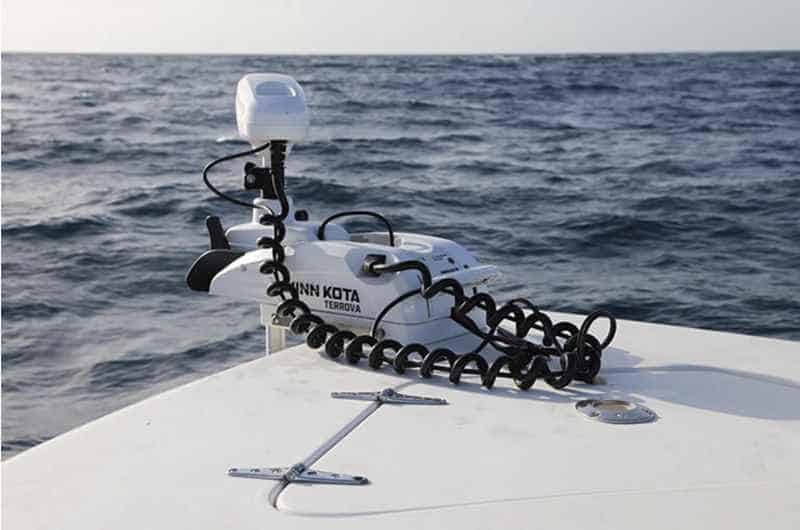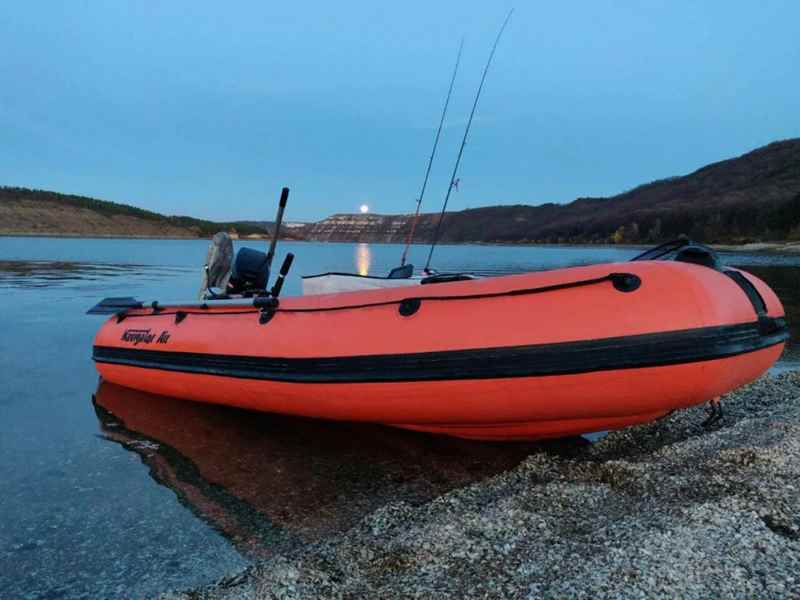Table of Contents
Trolling motors are essential equipment for anglers, providing precise control and maneuverability on the water. Whether you’re a seasoned fisherman or just starting out, selecting the right trolling motor for your boat is paramount to optimizing your fishing experience. From choosing the appropriate thrust to considering the voltage and mounting style, each decision contributes to finding the perfect fit for your specific needs.
Key Takeaways:
- Thrust is a crucial factor in determining a trolling motor’s power and ability to navigate through water efficiently.
- The voltage of the trolling motor determines the number of batteries required for optimal performance.
- Consider whether a bow mount or transom mount trolling motor suits your boat’s size and design.
- Choose between hand or foot control trolling motors based on personal preference and comfort.
- Pay attention to other factors such as shaft length, water conditions, and runtime requirements for an enhanced fishing experience.
Importance of Thrust to Move Through the Water
When it comes to choosing a trolling motor for your boat, one of the key factors to consider is the thrust. Thrust refers to the power and force provided by the trolling motor to move through the water. It is measured in pounds and plays a crucial role in ensuring efficient maneuverability on the water.
The amount of thrust required for your boat depends on various factors such as the weight of your boat, the amount of gear you carry, and the fishing conditions you encounter. It is essential to choose a trolling motor with sufficient thrust to handle the weight of your boat and any additional factors that may impact its performance.
Having a trolling motor with inadequate thrust can lead to difficulties in navigating through strong currents or windy conditions. On the other hand, having an appropriate amount of thrust will allow you to move smoothly and effortlessly, ensuring a more enjoyable fishing experience.
Thrust Recommendation Chart:
| Boat Weight | Thrust Recommendation |
| Up to 1,500 lbs | 30-40 lbs |
| 1,500-3,000 lbs | 40-70 lbs |
| 3,000-4,500 lbs | 70-100 lbs |
| 4,500+ lbs | 100+ lbs |
Refer to the table above to determine the recommended thrust based on your boat’s weight. Keep in mind that this is a general guideline, and factors such as the gear you carry and the fishing conditions may require additional thrust. It’s always better to choose a trolling motor with a slightly higher thrust rating to ensure optimal performance.
By understanding the importance of thrust and selecting a trolling motor with the appropriate power, you can confidently navigate through the water and make the most of your fishing adventures.
Trolling Motor Voltage & Batteries
When choosing a trolling motor for your boat, one crucial factor to consider is the voltage of the motor and the type of batteries it requires. Trolling motors typically come in 12, 24, or 36-volt options, each offering different levels of power and efficiency.
Trolling motors that operate on a 12-volt system are the most basic and suitable for smaller boats or those with limited power needs. These motors typically require a single 12-volt marine battery to function effectively. They are lightweight and compact, making them easy to install and maneuver.
Tip: To maximize the performance of a 12-volt trolling motor, it is important to invest in high-quality marine batteries that can provide sufficient power and reliable runtime.
For larger boats or those that require more power, a 24 or 36-volt trolling motor system is recommended. These systems generally require two or three 12-volt marine batteries connected in series to achieve the desired voltage. The higher voltage offers increased thrust and longer runtime, making it ideal for extended fishing trips or challenging water conditions.
Tip: When using multiple batteries in a 24 or 36-volt system, ensure they are of the same type and age to maintain optimal performance and avoid uneven discharge.
| Trolling Motor Voltage | Number of Batteries | Key Benefits |
| 12-Volt | 1 | Compact and lightweight |
| 24-Volt | 2 | Increased power and longer runtime |
| 36-Volt | 3 | Maximum thrust and extended runtime |
Choosing the right trolling motor voltage and batteries depends on the size of your boat, power requirements, and intended usage. It is important to carefully assess your needs and consult the manufacturer’s guidelines to ensure compatibility and optimal performance.
Bow Mount vs. Transom Mount Trolling Motors: Choosing the Right Maneuverability Option
When it comes to selecting a trolling motor for your boat, one crucial decision to make is whether to go with a bow mount or a transom mount motor. Both options offer unique advantages and are suited for different boating needs. Let’s take a closer look at the characteristics of each type to help you make an informed choice.
Bow Mount Trolling Motors
Bow mount trolling motors are mounted at the front of the boat, allowing for superior maneuverability and control. These motors are known for their pulling power, effectively steering the boat through the water. Bow mounts are particularly suitable for larger boats with ample space and a flat fishing platform, as they require a dedicated mounting space on the bow.
One notable advantage of bow mount motors is their ability to operate quietly, thanks to their placement away from the angler and fishing area. This makes them ideal for anglers who prioritize stealth and want to avoid spooking fish. Additionally, bow mount motors provide excellent control in windy conditions, allowing for more precise navigation and positioning on the water.
Transom Mount Trolling Motors
Transom mount trolling motors, on the other hand, are mounted on the stern of the boat. They offer ease of installation and compatibility with various boat styles. Transom mounts are a popular choice for smaller boats or boats with limited space, as they do not require any additional mounting areas on the bow.
One advantage of transom mount motors is their versatility. They can be easily adjusted and tilted out of the water when not in use, reducing the risk of damage or interference with other activities on the boat. Transom mounts are also generally more affordable compared to bow mounts, making them a cost-effective option for boaters on a budget.
Ultimately, the choice between a bow mount and a transom mount trolling motor depends on the size and design of your boat, as well as your specific boating needs. Consider factors such as available space, desired maneuverability, and budget to make the right decision for your fishing adventures.
Table: A Comparison of Bow Mount and Transom Mount Trolling Motors
| Aspect | Bow Mount | Transom Mount |
| Mounting Location | Bow | Stern |
| Maneuverability | Superior | Good |
| Noise Level | Quiet | Audible |
| Space Requirement | Requires ample bow space | No additional mounting area needed |
| Versatility | Less versatile | Highly versatile, adjustable and tiltable |
| Cost | Higher | Lower |
Do you Choose a Hand or Foot Control Trolling Motor?
Trolling motors offer two primary control options: hand control and foot control. Each option has its advantages and considerations, and the choice ultimately depends on personal preference and fishing style. Let’s take a closer look at the features and benefits of both hand control and foot control trolling motors.
Hand Control Trolling Motor
A hand control trolling motor is operated manually, with the angler using a hand tiller to control the motor’s direction and speed. This control option provides a hands-on approach, allowing for precise maneuvering and quick response to changes in fishing conditions. Hand control motors offer simplicity, durability, and ease of maintenance, making them a popular choice for many anglers.
Foot Control Trolling Motor
On the other hand, a foot control trolling motor allows anglers to operate the motor using their feet, providing a hands-free fishing experience. This option allows for improved maneuverability and control, as both hands are free to handle fishing gear, cast lines, and land fish. Foot control motors often have advanced features such as wireless remotes and GPS integration, enhancing convenience and functionality for serious anglers.
When choosing between hand control and foot control trolling motors, consider your fishing style, comfort level, and personal preference. Some anglers prefer the tactile control of a hand tiller, while others appreciate the hands-free operation and added features of a foot control motor. Whichever option you choose, be sure to practice using the motor to become proficient and maximize its effectiveness on the water.
In summary, the choice between a hand control and foot control trolling motor depends on your individual needs and preferences. Both options offer unique benefits and can enhance your fishing experience. Consider the level of control, maneuverability, and convenience that each option provides before making your decision. With the right trolling motor, you can navigate the water with ease and enjoy a successful day of fishing.
Conclusion
When it comes to enhancing your boating experience, selecting the right trolling motor is crucial. Whether you own an inflatable boat or a more substantial vessel, understanding how to choose and rightsize your trolling motor will ensure efficient and enjoyable navigation.
The first step in selecting a trolling motor is to consider the boat type. For example, if you have a kayak series – trolling motor options will differ from those for a pontoon bay boat deep-v. Freshwater trolling motors are designed for lakes and rivers, while saltwater trolling motors are built to withstand the corrosive marine environment. If you’re using an electric outboard, be sure to check compatibility with your boat’s design and weight.
For smaller crafts such as an inflatable boat or an electric kayak, lightweight and portable trolling motors are ideal. These often use a lithium battery, which offers a balance between power and weight, making them perfect for casual outings or fishing trips.
When determining the size of the trolling motor needed, consider the thrust level, which is measured in pounds. A general rule of thumb is that you need at least 2 pounds of thrust for every 100 pounds of fully loaded boat weight. Therefore, if you’re equipping a boat pontoon, you might require a more powerful motor compared to a motor kayak setup.
Mount trolling motors come in various mounting styles, including bow mount and transom mount. The choice between these will depend on your boat’s configuration and your control preferences. Bow mounts are suitable for larger boats like a deck boat center console fish n ski, offering better control and maneuverability. In contrast, transom mounts are more fitting for smaller vessels such as a bass boat pontoon.
When budgeting for your trolling motor, remember to account for all related transport expenses, including shipping with transportation charges if you’re not purchasing from an authorized dealer nearby. Also, consider rental charges of any type if you’re testing different models before buying.
Regular maintenance is key to prolonging the life of your trolling motor. Lack of maintenance can lead to additional expenses such as haul out launching towing transport and storage charges. Ensure you register your product for warranty claimsboats to avoid unforeseen costs.
Accessories can enhance your trolling motor’s performance. Trolling motor accessories like quick release brackets, trolling motor props, and trolling motor batteries can be crucial for a hassle-free boating experience. Be aware that accessories may also incur additional transport and storage charges.
For those who prefer shopping online, many retailers offer comprehensive buying guides. These guides often list motors by brand, series trolling motor options like the nv series trolling motor, and even include online product manuals. Always check the regular price and look for discounts or promotions.
In summary, choosing the right trolling motor involves considering your boat type, the water conditions, and the size and type of motor that fits your needs. Factor in the total cost of ownership, including related transport expenses, rental charges, and potential consequential costs due to lack of maintenance. With careful consideration and proper care, your trolling motor will serve as a reliable companion on many aquatic adventures.
FAQ
What factors should I consider when selecting a trolling motor?
When selecting a trolling motor, it’s important to consider factors like thrust, battery voltage, mounting style, and shaft length.
What is the thrust of a trolling motor and why is it important?
The thrust of a trolling motor determines its power and ability to move through the water. It is influenced by factors such as boat weight, gear, and fishing conditions.
What are the different power systems for trolling motors?
Trolling motors can use 12, 24, or 36 volts. The voltage determines the number of batteries required to operate the motor.
What are the differences between bow mount and transom mount trolling motors?
Bow mount motors provide superior maneuverability and control, while transom mount motors offer ease of installation and compatibility with various boat styles.
How do hand control and foot control trolling motors differ?
Hand control motors require manual operation, while foot control motors allow for hands-free operation.
How do I choose the right size trolling motor for my boat?
To choose the right size trolling motor, consider factors like thrust, voltage, mounting style, and control type, as well as shaft length, water conditions, and runtime requirements.












